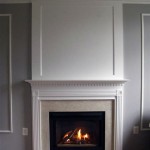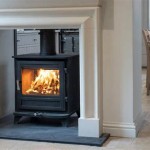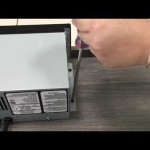Wood Stove Fireplace Inserts: Efficient Heating and Timeless Appeal
Wood stove fireplace inserts represent a popular heating solution for homeowners seeking to enhance the efficiency and aesthetics of their existing fireplaces. These inserts are designed to fit directly into the fireplace opening, transforming a traditional open-hearth fireplace, often inefficient, into a powerful and controllable heating appliance. They offer a blend of traditional aesthetics and modern technology, appealing to those who appreciate the warmth and ambiance of a wood fire while prioritizing energy efficiency and environmental responsibility.
Traditional open fireplaces are notoriously inefficient. Much of the heat generated escapes up the chimney, leading to a net loss of heat within the home. Wood stove inserts, on the other hand, are designed to maximize heat output and minimize heat loss. They accomplish this through several key design features, including airtight construction, advanced combustion systems, and integrated fans. These factors contribute to significantly improved heating efficiency compared to traditional fireplaces.
The decision to install a wood stove fireplace insert involves considering several key factors, including the size of the area to be heated, the existing fireplace structure, and local regulations regarding wood-burning appliances. Careful planning and selection are essential to ensure optimal performance and compliance with safety and environmental standards.
Understanding the Operation and Benefits of Wood Stove Inserts
Wood stove fireplace inserts operate on a principle of controlled combustion. The airtight construction allows for precise control over the air supply, which in turn regulates the rate at which the wood burns. This control contributes to a cleaner and more complete combustion process, resulting in higher heat output and reduced emissions. Modern wood stove inserts often incorporate secondary combustion systems, further burning off gases and particulates to minimize pollution and maximize efficiency.
The benefits of using a wood stove fireplace insert extend beyond improved heating efficiency. These inserts offer a safer and more convenient alternative to open fireplaces. The enclosed design prevents sparks and embers from escaping into the room, reducing the risk of fire. The controlled combustion process also minimizes creosote buildup in the chimney, which is a significant fire hazard. Furthermore, many inserts feature thermostatic controls that allow for consistent and comfortable heating throughout the day, reducing the need for constant monitoring and adjustments.
Another significant advantage of wood stove inserts is their versatility. They are available in a range of sizes and styles to suit different fireplace openings and heating requirements. Some models are designed for supplemental heating in smaller rooms, while others are capable of heating entire homes. The choice of fuel also offers flexibility, with some inserts designed to burn wood, while others can burn pellets or other biomass fuels.
The installation process for a wood stove fireplace insert typically involves several steps. First, the existing fireplace must be inspected to ensure it is structurally sound and capable of supporting the weight of the insert. The chimney must also be inspected and cleaned to remove any creosote buildup. A designated professional is usually required to handle the installation of the insert, including connection to the chimney, ensuring proper sealing and airflow, and verifying compliance with local building codes. It is crucial to engage a qualified installer to ensure the safe and efficient operation of the insert.
Key Features to Consider When Choosing a Wood Stove Insert
When selecting a wood stove fireplace insert, several key features should be considered to ensure optimal performance and satisfaction. These features include heating capacity, efficiency rating, emissions certification, firebox size, and aesthetics.
Heating capacity is typically measured in British Thermal Units (BTUs) and indicates the amount of heat the insert can produce per hour. The appropriate heating capacity will depend on the size of the area to be heated and the climate. An undersized insert will struggle to maintain a comfortable temperature, while an oversized insert may result in overheating and inefficient operation.
The efficiency rating, expressed as a percentage, indicates the amount of heat produced from the fuel compared to the amount of heat lost up the chimney. Higher efficiency ratings translate to lower fuel consumption and reduced heating costs. It is important to choose an insert with a high efficiency rating to maximize fuel savings and minimize environmental impact.
Emissions certification ensures that the insert meets established environmental standards for particulate matter emissions. The Environmental Protection Agency (EPA) sets limits on particulate emissions from wood-burning appliances to protect air quality. Choosing an EPA-certified insert helps to reduce air pollution and promote a healthier environment.
The firebox size determines the size and amount of wood that can be loaded into the insert. A larger firebox allows for longer burn times and reduces the need for frequent refueling. However, a larger firebox may also require more wood to operate efficiently. The appropriate firebox size will depend on individual heating needs and preferences.
Aesthetics play a significant role in the selection process. Wood stove inserts are available in a variety of styles, finishes, and door designs to complement different home décor. Choosing an insert that matches the existing aesthetic of the fireplace and surrounding room can enhance the overall appeal of the space.
Beyond the core features, additional considerations include ease of use, maintenance requirements, and warranty coverage. An insert with user-friendly controls and features, such as automatic air control and ash removal systems, can simplify operation and reduce maintenance effort. A comprehensive warranty provides peace of mind and protection against potential defects or malfunctions.
Maintenance and Safety Practices for Wood Stove Inserts
Proper maintenance and adherence to safety practices are crucial for the safe and efficient operation of a wood stove fireplace insert. Regular maintenance helps to prevent problems, extend the lifespan of the insert, and ensure optimal performance. Safety practices minimize the risk of fire and other hazards.
One of the most important maintenance tasks is regular chimney cleaning. Creosote, a flammable byproduct of wood combustion, can accumulate in the chimney over time. If left unchecked, creosote buildup can ignite and cause a dangerous chimney fire. It is recommended to have the chimney inspected and cleaned annually by a qualified professional. The frequency of cleaning may vary depending on the type of wood burned, the burning habits, and the efficiency of the insert.
Another essential maintenance task is inspecting the insert's internal components. The firebox, baffles, and air tubes should be checked regularly for signs of damage or wear. Damaged or worn components should be replaced promptly to maintain optimal performance and prevent safety hazards. The door gasket should also be inspected to ensure a tight seal. A worn or damaged gasket can allow air to leak into the firebox, reducing efficiency and increasing emissions.
Proper fuel selection is also critical for safe and efficient operation. Seasoned hardwood is the preferred fuel for wood stove inserts. Seasoned wood has a lower moisture content than green wood, which results in more efficient combustion and reduced creosote buildup. Green wood should be avoided as it produces excessive smoke and creosote.
Safe burning practices are essential for preventing fires and other hazards. Always use a fire screen to prevent sparks and embers from escaping into the room. Never leave a burning fire unattended. Keep flammable materials, such as curtains, furniture, and newspapers, away from the insert. Install and maintain working smoke detectors and carbon monoxide detectors to alert occupants to potential hazards. Ensure proper ventilation in the room to prevent carbon monoxide buildup.
Ash disposal should be handled carefully to prevent fires. Allow ashes to cool completely before disposing of them. Store ashes in a metal container with a tight-fitting lid. Place the container on a non-combustible surface away from flammable materials. Never dispose of ashes in a cardboard box or plastic container. Dispose of ashes in accordance with local regulations.
By following these maintenance and safety practices, homeowners can ensure the safe, efficient, and long-lasting performance of their wood stove fireplace insert. These practices contribute to a comfortable and enjoyable heating experience while minimizing the risk of fire and other hazards.

Why A Wood Burning Fireplace Insert Bethesda Md Service

Wood Burning Fireplace Inserts 101 Mf Fire

Wood Burning Fireplace Inserts Insert Installation

T25i Timberwolf Wood Fireplace Insert Hearth Stove Patio

Ventis Hei240 Wood Burning Insert Rockford Chimney

Wood Inserts We Love Fire

What S Best A Fireplace Stove Or Insert We Love Fire

Osburn Matrix 2700 Wood Insert

All About Wood Stove Fireplace Inserts Champs Chimney
Wood Stove Inserts In Our Fireplace Showroom








